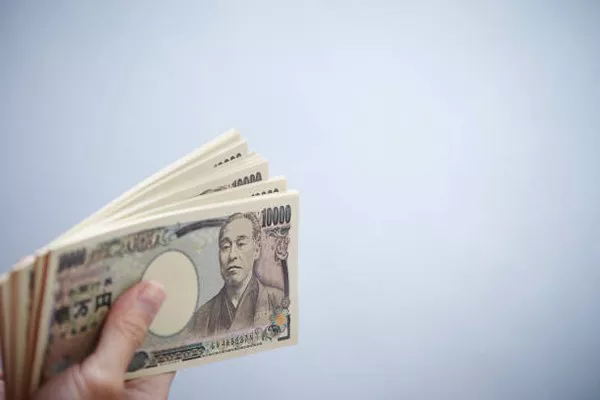Coins have played a significant role in human civilization, serving as mediums of exchange, markers of cultural identity, and symbols of economic prosperity. In Japan, a country renowned for its rich history and cultural traditions, coins hold a special place in the collective consciousness. From ancient times to the present day, Japanese coinage reflects the nation’s evolution, offering insights into its economic, social, and political development.
Among the diverse array of Japanese coins, one stands out for its size and historical significance—the Ōban. This colossal coin, crafted centuries ago, continues to captivate numismatists and enthusiasts alike with its impressive dimensions and cultural importance. In this article, we delve into the story behind the Ōban, exploring its origins, characteristics, and enduring legacy within Japan’s numismatic landscape.
Unveiling the Ōban: A Monumental Coinage
The term “Ōban” translates to “large coin” in Japanese, a fitting designation for a numismatic specimen of considerable size and weight. Dating back to the late 16th century, the Ōban emerged during a period of profound transformation in Japan’s history—the Azuchi-Momoyama period (1573–1603). This era marked the culmination of the Sengoku period, characterized by intense warfare and political upheaval, and the dawn of the unification under the powerful daimyō, Oda Nobunaga and his successor, Toyotomi Hideyoshi.
Crafted primarily from gold, the Ōban served as a manifestation of wealth, power, and authority during this tumultuous period. Its dimensions were impressive by any standard—typically measuring around 87 mm in diameter and weighing approximately 160 grams. Such dimensions were unparalleled in the realm of Japanese coinage, underscoring the Ōban’s status as a symbol of prestige and influence.
Characteristics of the Ōban
The Ōban possessed distinct characteristics that set it apart from other Japanese coins of its time. Its obverse side typically featured intricate designs, including depictions of dragons, phoenixes, or other mythological creatures, alongside floral motifs and auspicious symbols. These motifs served not only as decorative elements but also as expressions of cultural identity and spiritual beliefs.
On the reverse side, inscriptions denoting the issuing authority, typically a powerful daimyō or warlord, were prominently displayed. These inscriptions provided essential information about the coin’s origin and legitimacy, ensuring its acceptance and circulation within the realm of commerce.
Furthermore, the Ōban’s edges were often irregular or undulating—a deliberate design choice intended to prevent counterfeiting and ensure the coin’s authenticity. This feature, known as “mimi” in Japanese, added to the Ōban’s mystique and allure, reinforcing its status as a prized artifact of Japanese numismatics.
Historical Significance of the Ōban
Beyond its aesthetic appeal and technical craftsmanship, the Ōban held profound historical significance within the context of Japan’s political and economic landscape. During the Azuchi-Momoyama period, Japan experienced a consolidation of power under centralized authority, culminating in the establishment of the Tokugawa shogunate in the early 17th century.
The issuance of the Ōban played a pivotal role in this process, serving as a means of consolidating wealth and asserting control over economic resources. Daimyō and warlords utilized the Ōban to reward loyal vassals, pay tribute to allies, and finance military campaigns—a testament to the coin’s instrumental role in shaping the course of Japanese history.
Furthermore, the Ōban’s status as a symbol of authority extended beyond the realm of domestic affairs, influencing Japan’s interactions with foreign powers. During the Age of Exploration, European traders and missionaries marveled at the Ōban’s size and purity, recognizing it as a tangible representation of Japan’s wealth and sophistication.
Legacy of the Ōban: From Past to Present
Despite the passage of centuries, the legacy of the Ōban endures, serving as a tangible link to Japan’s storied past. Today, Ōban coins are prized artifacts in museums and private collections around the world, cherished for their historical significance and aesthetic beauty.
Moreover, the Ōban continues to inspire contemporary artists, scholars, and collectors, sparking a renewed interest in Japan’s numismatic heritage. Through exhibitions, academic research, and cultural initiatives, efforts are underway to preserve the legacy of the Ōban and ensure that future generations appreciate its importance within the broader context of Japanese history and culture.
See Also: Is There a 1000 Yen Coin?
Conclusion
In the annals of Japanese numismatics, few coins command the reverence and fascination accorded to the Ōban. From its imposing dimensions to its intricate designs, the Ōban embodies the essence of Japan’s artistic ingenuity and historical narrative.
As we reflect on the legacy of the Ōban, we are reminded of the enduring power of coins to transcend time and space, connecting us to the people and events that have shaped our world. In preserving the heritage of the Ōban, we pay homage to Japan’s rich cultural tapestry and reaffirm our commitment to understanding and appreciating the diverse facets of human experience encapsulated within each numismatic artifact.


